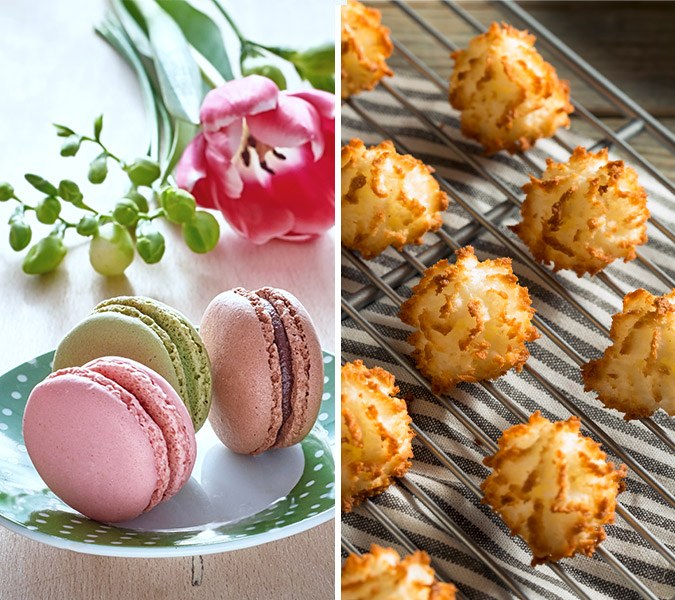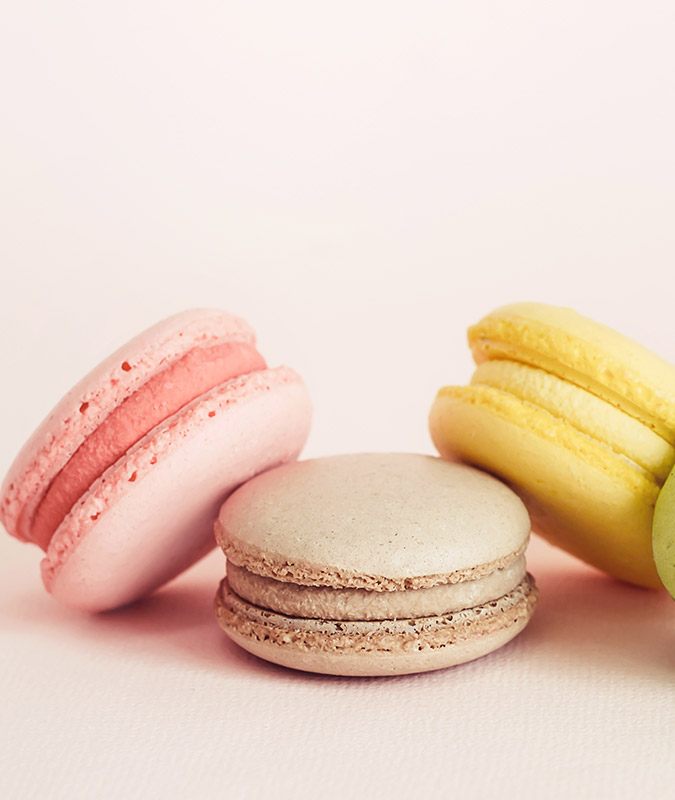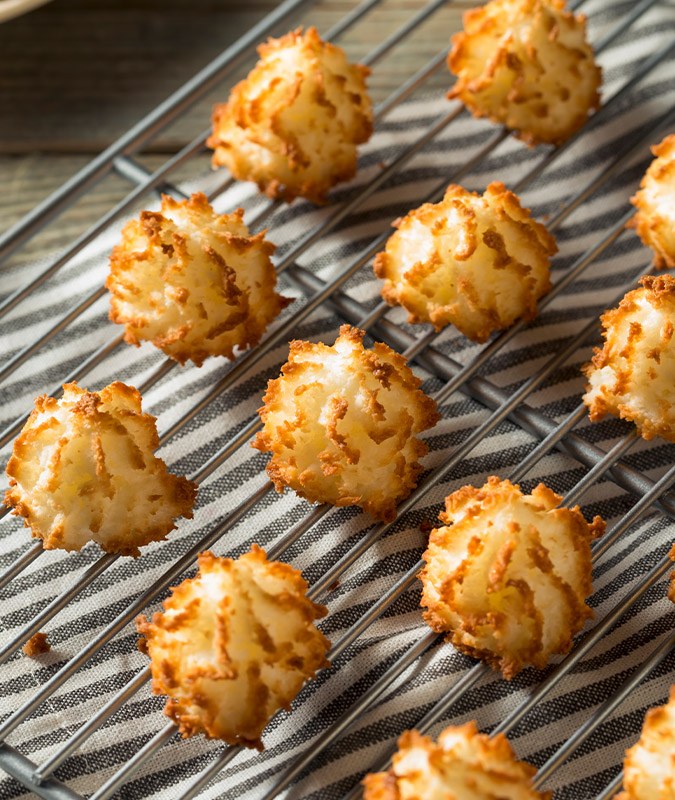While the name Macaron and Macaroon are used interchangeably in some circles, both the names and the cookies are worlds apart, not only in ingredients but in technique and aesthetics. The continued confusion when it comes to these dainty treats is not only because of their similar moniker; but also owe to a linked past, stretching all the way back to the 8th century.

The History of the Macaron
The technique for creating macaron cookies seems to trace its origins back to Italy. In fact, the word Macaron or Macaroon comes from the Italian ammaccare, meaning “to crush” in reference to the crushed almond paste used as a central ingredient in the recipe. Traced back to the 8th century, almond macarons; were first created in an Italian monastery utilizing the bitter almonds known so well throughout the Italian peninsula. Culinary historians speculate that the technique was later brought to France when the Italian Catherine de Medici married king Henry II, bringing her chefs and their recipes with her. Upon their introduction, the sweet Italian maccheroni was directly translated into French as “macaron."
It wasn’t until the early 1900s when Pierre Desfontaines, grandson of the prominent patisserie owner, Laduree, sandwiched the two cookies together with a dollop of chocolate ganache, creating the iconic French macaron as we know it today. Sold at the bakery as the: macaron Parisian, this moment marked the formal divergence of the French macaron from its original Italian form.

Above: Almond macarons in pretty pastel colors.
Coconut Macaroons
It’s not a huge stretch to imagine that at some point, the creative chef might begin to experiment with the three simple ingredients that make up a macaron: sugar, egg whites, and almond flour. While coconut had been introduced to Europe in the 1500s, thanks to Vasco de Gama, it remained an exotic ingredient until the 1890s when a French transportation company began shredding and drying their coconut before shipping to prevent spoilage during their long voyage from Sri Lanka or Ceylon. In North America, the same practice of shipping dried and desiccated coconut was implemented. In this form, coconut was easily incorporated into recipes, including the traditional almond macaron. Coconut transformed the macaron, helping it bake up into a sturdier cookie with a much longer shelf-life. The coconut macaroon quickly became a popular alternative for the delicate original. Introduced to America in this form, it’s not surprising that until the last decade, most Americans were much more familiar with the coconut macaroon than the Parisian macaron.

Above: Coconut Macaroons, recognizable for their telltale pointy shape.
Telling Macarons from Macaroons
If history isn’t your thing, there are a few simple ways to tell your macaron from your macaroon. The cookies are different in their main ingredient. Macarons rely on almond flour for their crisp exterior and tender, chewy middle, while shredded coconut gives macaroons a dense and chewy texture. The cookies also look strikingly different. Macaron’s egg white and almond batter bakes up to form a cookie with a smooth surface, a quasi-hollow interior, and a pronounced ‘foot’. These airy meringues are then sandwiched together around a filling generally of buttercream, ganache, or fruit jam. Coconut macaroons are held together by sugar and egg whites and boast a shaggy exterior and a dense dreamy inside. Shaped into small mounds or pyramids, you’ll often find them drizzled or dipped in chocolate.
While French macarons provide no end of flavor and color variations, coconut macaroons generally don’t deviate from the traditional. Sometimes chocolate or coffee is incorporated into the batter to add color and flavor, or mix-ins like dried fruit or chunks of chocolate for a textural crunch. For two cookies that are composed of such similar ingredients, once baked, they become very different indeed!
Why Do People Still Confuse These Cookies?
It turns out that the big confusion over macarons and macaroons is mainly an American thing. In fact, the French know the coconut cookie by an entirely different name, rochers coco. Up until the last decade, the only macaroon referred to in the US was the coconut variety, but when the French macaron suddenly emerged into the forefront of the food world, questions began to arise with some bakers pronouncing it as the French would and others calling it by the same name as its coconutty cousin. Your best bet is to take a look for yourself since, after all, you’re now an expert.
Are Macarons Gluten Free?
Both extremely delicious macarons and macaroons short list of ingredients makes them enjoyable for almost everyone. So if you’re wondering: are macarons gluten free? The answer is yes! They are also vegetarian-friendly and depending on the company you buy them from, can also be refined-sugar free. For a tasty and somewhat healthy indulgence, look no further than these yummy cookies.
Where to Buy Macarons
If you’re living somewhere in rural America, chances are that when you search “macarons near me,” you won’t find very many if any, options. Outside specialty bakeshops and patisseries, Americans are still hard-pressed to find French macarons. Thanks to Gourmet Food Store, your search for where to buy macarons can finally end! We have an excellent assortment of authentic French Macarons in a variety of colors and flavors. With sizes ranging from small six-piece sets to 96 piece bulk boxes. Order through our website for exactly the amounts you need!